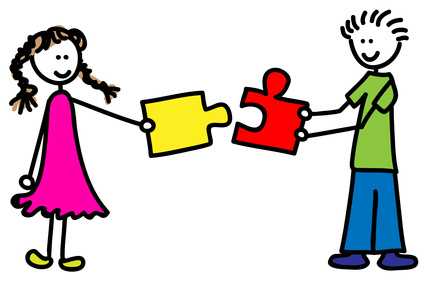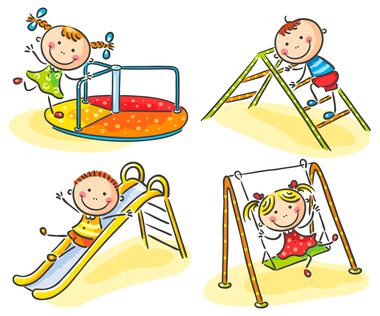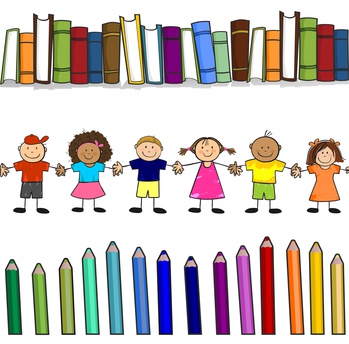Social Learning theory
Albert Bandura is a social psychologist who pioneered the Social Learning Theory which suggest that children learn behaviour from observing and imitating others.If a child sees someones's behaviour leads to a pleasant outcome, they are likely to try and copy it. Children also model behaviour from people whom they see as important or influential.
See examples below:
- Jenny sees dad giving a sweet to her younger sister who greets him at the door. From this observation jenny has learned that if she copies this behaviour, she will also get a sweet. So next time, when she hears dad entering the house, she will run to greet him and receive a sweet.
(Jenny adopted the behaviour of her brother because it results in an outcome that she desired or valued)
- Sean loves playing football and is a great fan of David Beckham. He repeatedly watches him play football on telly and he practises his moves everyday after school and at week-ends, so that he too can play for England one day.
(Sean has been influenced by the famous foot baller whom he admires and wants to be famous like him.)
- 4 year old Kylie watches mum putting make-up on and wearing high heels when whe goes out with friends. Kylie wants to feel grown up, so when mum is not nearby, Kylie helps her self with mum's make-up; she'll put lipstick on and wear her mum's high shoes.(Kylie imitates the behaviour of a significant person in her life, so she can also look grown up and pretty like her mum.)
- Claude sees dad smoke a pipe everynight after dinner. He sits beside his dad holding a pencil on the tip of his mouth and pretend to smoke.
(Claude model's the behaviour of the most important person in his life, he looks up to his dad and wants to be cool just like his dad)
- All the popular kids at school have the latest trainer. Riley wants to fit in with his friends, so he asks his mum if she can buy him the same trainers like his friends.
(Riley wants to adopt a modelled behaviour of popular kids in the school because he admires their popularity and he too wants to be popular.)
- 3 year old Yasmin amused her parents when she said her first string of words 'Oh my God'; mum frequently says these words at home.
(Yasmin models the behaviour of significant people in her life; her parents has had an influence on the language acquisition.)
As well as learning positive behaviour, children will also learn negative behaviour. For example:
Eat unhealthy food as seen on TV adverts.
Use bad language they see and hear on TV.
A 9 year old goes on a diet to look like their favourite singer.
12 year old tries to bully the younger children to give him money, because he has already seen a school bully get what he wants.
Application of SLT in Early years setting
In current practice , practitioners can act as role models so that children will learn good practice. Since children are quick to imitate adult, it is important that adults display positive behaviour.Practitioners can present themselves in a positive light by being a role model for children through what they say and do as children will copy adults. See the table below:
Applying social learning theory in early years setting |
|---|
Meal time: At meal time early year practitioners can wash hands and sit to eat, so that children too will imitate this behaviour.Children can learn setting up table and learn table manners by observing and copying early year practitioner and other children. Through observing and copying children can learn to use knife & fork and learn not to talk with mouth full. Promoting language development Set up 'role play' activities where children imitate speech and behaviour of adults and children.Whenever appropriate practitioners should say 'thank you' and 'please'. Teach nursery songs and introduce new vocabulary. Promoting physical development When children watch other children skip or hop, they will copy the action.Children will learn to ride a bike or climb a frame by observing and copying other children. Children will learn to throw or catch a ball if they see other children doing it. Actions When children tidy up or put away the toys, other children will copy that behaviour. Children will not just learn from adults in the nursery, but will also observe and copy each other. |
Social learning theory suggest that young children not only learn visual behaviour (actions) from adults, but also models thinking. If adult talk out aloud when solving a problem, they are actually modelling thinking; children in role play, will imitate the speech and behaviour of adults.
Evidence to support Social Learning Theory
Albert Bandura social learning theory is based on the famous 'Bobo doll' experiment that he conducted in 1961. In short, the experiment involved one group of children in a play room with toys, a bobo doll (inflated doll) and an adult whom they observed hitting the bobo doll in an aggressive manner. The other group of children watched an adult play calmly with the bobo doll . Afterwards, both groups of children were let into a play area with the same toys including the bobo dolls.The findings of the experiment showed that most of the children in the first group played aggressively with the bobo doll and in the second group, the children played peacefully with the bobo doll. The experiment result suggest that children learn by observing and imitating others.
Click here to see the video of the experiment Bobo Doll experiment 1961
Criticism of the SLT
SLT ignores biological factors that can influence learning and personality development. Genetics also has a role in determining certain behaviour such as gender behaviour and aggression.
The theory lack explanation of how children learn. It doesn't describe any learning processes and does not address the different ages of learning that children are capable of. Furthermore it doesn't address that children are all different, hence their ability to learn.
REFERENCES
Bandura, A., Ross, D. & Ross, S.A. (1961). Transmission of aggression through the imitation of aggressive models. Journal of Abnormal & Social Psychology, 63, 575-582Caroline Meggit & Tina Bruce (2014) CACHE Level 3 Early Years Educator. Hodder Education:London
Caroline Meggit (2011) CACHE Level 3 Children & Young People's Workforce Certificate. Hodder Education:London
Tassoni et al (2014) Level 3 Early Year Educator. Pearson: Harlow Essex
Tassoni et al (2011) Level 3 Certificate for the Children and Young People's Workforce. Pearson: Harlow Essex
Debate Films (2011). The Brain: A Secret History - Emotions; Bandura Bobo Doll Experiment. www.youtube.com/watch?v=zerCK0lRjp8






